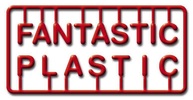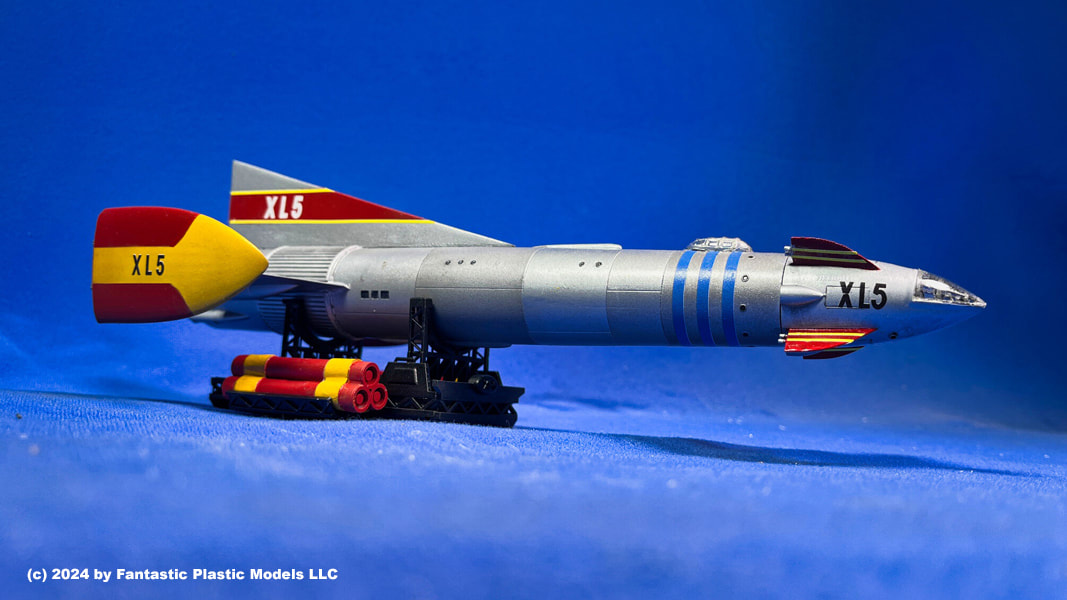Science Fiction - 1960s
This was the decade that Science Fiction modeling exploded. And the decade's major influences can be reduced to four names: Gerry Anderson, Irwin Allen, Gene Roddenberry and Stanley Kubrick.
Britain's Anderson was the children's sci-fi specialist whose "Supermarionation" shows including "Supercar" (1960), "Fireball XL-5" (1962-63), "Stingray" (1963), and his Supermarionation masterpiece, "Thunderbirds" (1964-66). Although his plots and characters tended to be as wooden as his big-headed puppets, his vehicle miniatures were truly state-of-the-art.
While Mr. Anderson was reigning over syndicated children's TV, Irwin Allen -- a schlock B-movie producer who would a decade later become a schlock A-movie producer -- dominated American network sci-fi with such beloved -- albeit hokey -- fantasies as "Voyage to the Bottom of the Sea" (1964-1968), "Lost in Space" (1965-1968), "The Time Tunnel "(1966-1967), and "Land of the Giants" (1968-1970). Again, it's Allen's vehicles -- particularly the Seaview, the Flying Sub and the Jupiter 2 -- that are remembered fondly, not his stories.
At the other end of the TV sci-fi spectrum, Gene Roddenberry's "Star Trek" (1966-1969) was a magnificent ratings failure that would, in decades to come, serve as the cornerstone of a multi-billion-dollar entertainment empire. Designed by the show's art director, Matt Jeffries, "Star Trek's" U.S.S. Enterprise represented a quantum leap in starship design that, unlike the dated "cigar with fins" spaceships that were still in vogue when the decade began, looks wholly contemporary more than a half century later.
The second quantum leap in speculative spacecraft design occurred just two years after "Star Trek's" premiere with the 1968 release of Stanley Kubrick and Arthur C. Clarke's "2001: A Space Odyssey." Featuring near-future spacecraft based on rigid scientific principles and given form by imaginative model-makers who added levels of detail never before seen on the silver screen, the gorgeous designs that sprung from this landmark motion picture set a new standard for realism that, even after the real year 2001, may have been matched, but have yet to be surpassed.
Designs from all four creators -- and more -- can be found in this lengthy section
Britain's Anderson was the children's sci-fi specialist whose "Supermarionation" shows including "Supercar" (1960), "Fireball XL-5" (1962-63), "Stingray" (1963), and his Supermarionation masterpiece, "Thunderbirds" (1964-66). Although his plots and characters tended to be as wooden as his big-headed puppets, his vehicle miniatures were truly state-of-the-art.
While Mr. Anderson was reigning over syndicated children's TV, Irwin Allen -- a schlock B-movie producer who would a decade later become a schlock A-movie producer -- dominated American network sci-fi with such beloved -- albeit hokey -- fantasies as "Voyage to the Bottom of the Sea" (1964-1968), "Lost in Space" (1965-1968), "The Time Tunnel "(1966-1967), and "Land of the Giants" (1968-1970). Again, it's Allen's vehicles -- particularly the Seaview, the Flying Sub and the Jupiter 2 -- that are remembered fondly, not his stories.
At the other end of the TV sci-fi spectrum, Gene Roddenberry's "Star Trek" (1966-1969) was a magnificent ratings failure that would, in decades to come, serve as the cornerstone of a multi-billion-dollar entertainment empire. Designed by the show's art director, Matt Jeffries, "Star Trek's" U.S.S. Enterprise represented a quantum leap in starship design that, unlike the dated "cigar with fins" spaceships that were still in vogue when the decade began, looks wholly contemporary more than a half century later.
The second quantum leap in speculative spacecraft design occurred just two years after "Star Trek's" premiere with the 1968 release of Stanley Kubrick and Arthur C. Clarke's "2001: A Space Odyssey." Featuring near-future spacecraft based on rigid scientific principles and given form by imaginative model-makers who added levels of detail never before seen on the silver screen, the gorgeous designs that sprung from this landmark motion picture set a new standard for realism that, even after the real year 2001, may have been matched, but have yet to be surpassed.
Designs from all four creators -- and more -- can be found in this lengthy section









































